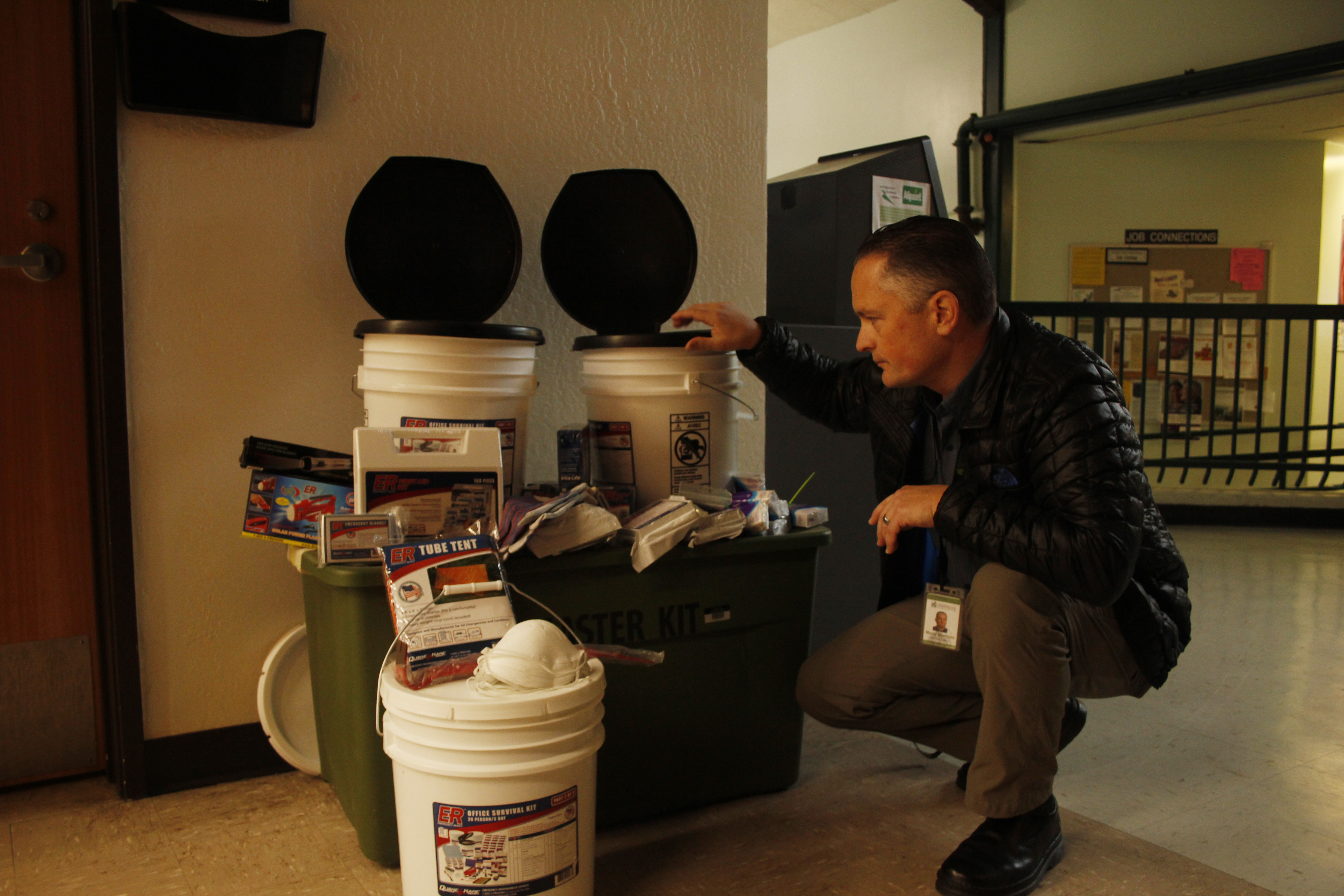
By Ryan Fournier
Buildings will crumble. Roads will submerge. Powerlines will topple. Many people will likely die very quickly in a sudden, cataclysmic natural event unlike any to touch the Northwest in living memory, experts say.
Emergency planners at all levels are preparing their response to a potential 9.0 magnitude “megathrust” earthquake, created by offshore tectonic activity along the Cascadia Subduction Zone, which stretches from British Columbia to California. The quake is expected to be followed by a tsunami.
The megathrust is caused periodically by a sudden release of pressure between the Juan de Fuca Plate in the northeastern Pacific Ocean and the North American Plate, which our continent rests on. Eastward movement of the Juan de Fuca Plate causes compression between the two. After hundreds of years of build-up, there occurs a rupture and a massive quake.
“I think it is unlikely that we will see the big quake in the next 30-50 years,” said Dann May, professor of Geology and Anthropology at Peninsula College. Tsunami deposits in Washington, said May, suggest a timeline of roughly 450 years between earthquakes of this size.
May pointed out, though, that predictions are based on statistical averages of past events. In other words, no precise waiting period can be counted on.
The last such quake in Washington occurred in the year 1700. That quake was so powerful it caused a tsunami in Japan.
In a June news release, the Federal Emergency Management Agency warned that, in the event of such a shake, water, electricity, communications, fuel and roads would be “heavily disrupted.”
Port Angeles is a “real mess” when it comes to roadways that would be knocked out, said Jim Buck, a member of Joyce Emergency Planning and Preparation JEPP, which was awarded an honorable mention from FEMA this year for community preparedness.
Bridges are expected to go down, effectively splitting the Olympic Peninsula into a number of micro-islands, with no way for vehicle traffic to move from one to the other.
That means access to emergency services, as well as food and clean water, will likely be severely limited.
JEPP advocates having enough supplies prepared to survive for a month. These supplies include food, water, first aid supplies, flashlights, wind-up radios, and tents. Fastening down your propane tank or water heater, and knowing how to shut off the gas line immediately after an earthquake are highly recommended.
Damaged systems carrying flammable gasses are a major risk for fires and explosions in the wake of large earthquakes.
Clallam County offers supply lists and preparation tips at http://www.clallam.net/emergencymanagement/disasterprep.html
In recent years, local and state “seismic codes” have been implemented to help insure structures can sustain heavy shaking from a major quake.
PC’s newer buildings are built to these standards, but some of the older ones may have been subject to less stringent codes when they were built, according to Rick Croot, assistant director of Facilities Planning and Operations.
The 6.8 magnitude Nisqually quake of 2001 caused structural damage to the Little Theater, which was closed so it could be retro-fitted to modern standards.
A Community Emergency Response Team CERT at Peninsula College is trained to search buildings for people, and to administer limited first aid, or “smart triage,” in an emergency situation. PC’s 20 member Team is made up of staff and faculty.
CERT is a Nationwide program of community-based disaster responders, many of whom are trained to work with fire department staff to coordinate emergency response.
Clallam County Emergency Management teaches two CERT courses each year. Anyone willing is encouraged to sign up. To register, call (360) 417-2525 or visit Clallam County Emergency Management online.
The Department of Homeland Security offers step-by-step advice for earthquake response at https://www.ready.gov/earthquakes
